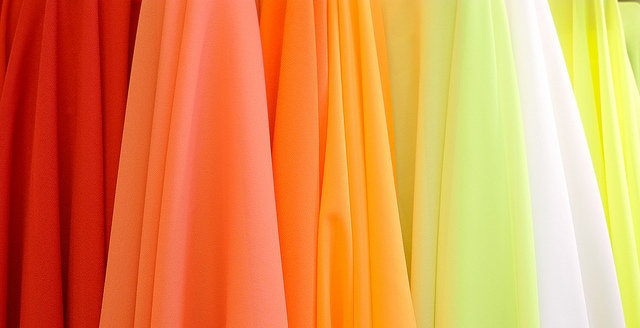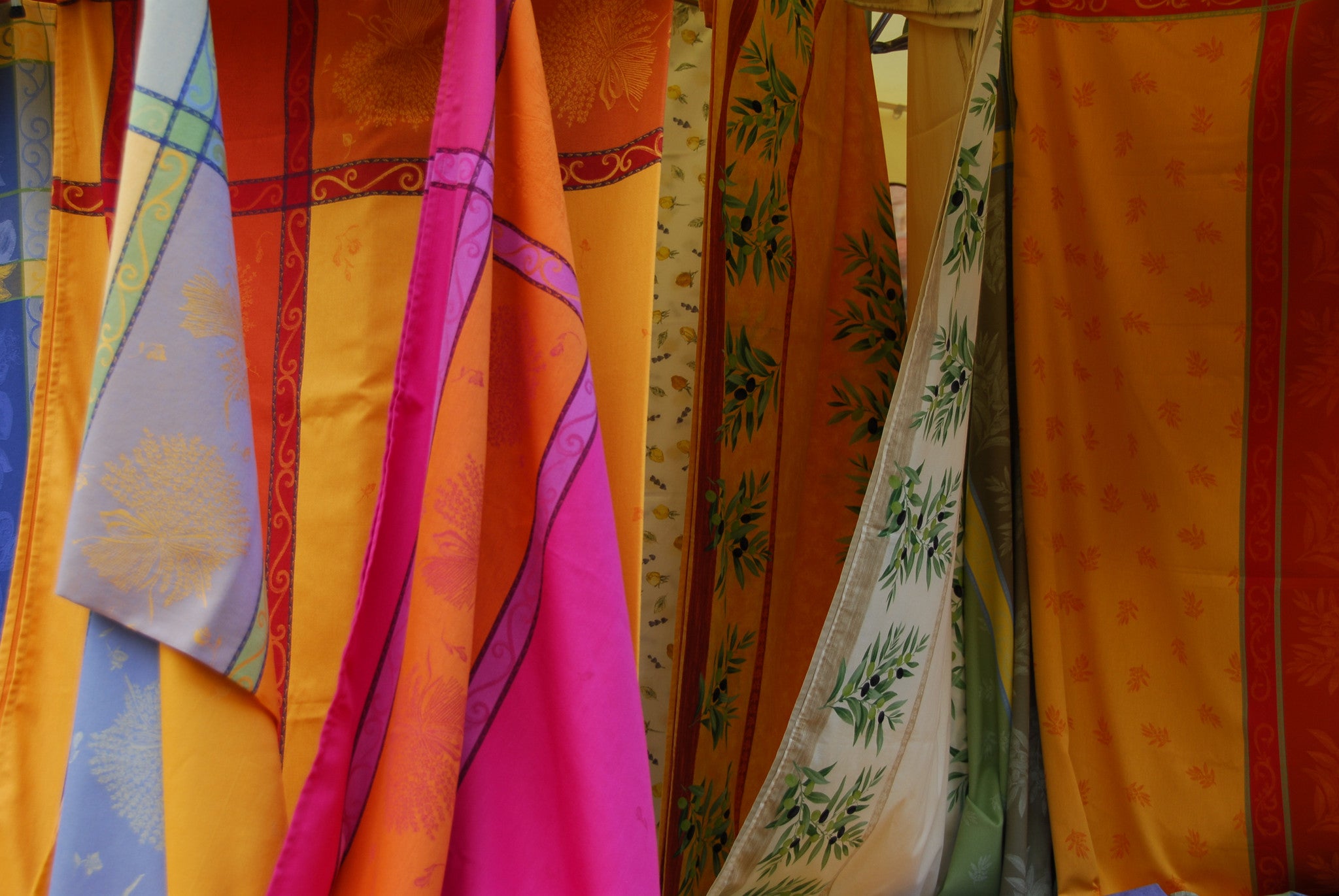If piling your closet with a heap of customary fabrics is your much-loved hobby, then taking right care of them should be your priority too. Heeding to their exclusively delicate nature, these fabrics should be subjected to the least possible washing cycles. They might make you snappy at times because of the extra hard work they bring along, but if your love for Indian crafts has no strings then the uphill struggle is totally worth it.
Their conventional touch makes them instantly stick out a mile in the world of fabrics. As a matter of their organic and handmade nature, it’s been said: “The more you wash, the more they shine”. So be it color bleeding or color wicking, a little expertise is all you need to make your life a fun sail.
Fabrics by Craft
Hand Block Printing
Nothing can beat the beauty of intricately carved wooden blocks inked and embossed on a huge variety of fabrics. Essentially dipped in natural dye colors, these prints are commonly exposed to a lot of color defects like color bleeding (excess color draining out in first few washes), and color flushing (dyed area bleeding out into the unprinted area). While a wide variety of crafts are done using Hand-block printing, every fabric requires special care.
Fab Tips
- Avoid machine wash as it can muddle up your laundry and lead to quick color fading
- Hand-wash in isolation to check for color overspill
- Soak in cold water and use a mild detergent
- Don’t leave the pile of wet clothes unattended, dry immediately
- Drip dry in shade as direct sun can lead to shrinkage
- Iron inside-out
- If printed on exclusive silk yarns, stick to dry-cleaning only
Ajrak, Bagru Dabu, Kashish, and Batik
Fab Note: They all subject to minor color bleeding. Rinse separately for the initial 2-3 washesGold block
Fab Note: Gold block is free from color bleeding. Just don’t use a brush while washing, as that can damage the embossed motifs.Khari
Fab Note: They don’t bleed. Khari can be easily machine-washed, using a mild detergent
Indigo
Fab Note: Indigo bleeds like sin! Should be strictly hand-washed in isolation
Tie & Dye
Fabrics folded, twisted, pleated or wrinkled and dyed in bright and bold colors make this art fascinating and stand apart. A vivid form of resist dyeing technique, tie-and-dye is one of the most historic crafts of Rajasthan. With a beautiful splash of colors and patterns dappled on these fabrics, you would not want to risk it washing the wrong way. Since it bleeds only for the first few washes, the hassle is not going to last long.
Fab Tips
- Wash separately for the first few washes
- Dip in cold water and use a soft cleanser
- Add ¼ cup of Vinegar for enduring vibrancy and wear
- Rinse under running water till color bleeding stops
- Hang out for drying in oblique sunlight
- Iron at a moderate temperature
Bandhani and Leheriya
Fab Note: Bandhani and Leheriya are subject to minor or no bleeding
Screen Printing
With the advancement of technology and ever-changing trends, screen printing has become a popular and much-loved printing technique in the Fashion realm. Easy on the pocket, screen printed fabrics cost pretty less than the conventionally printed fabrics. Having been printed by manual screen frames or computer controlled lasers and jets, these fabrics require special care. Dark colors bleed a lot as compared to lighter ones.
Fab Tips
- Hand-wash inside-out to protect the printed areas
- Wash the dark-colored fabrics separately in a bucket
- Dip in cold water and use a mild cleanser
- Do not use bleach as it can lead to cracking or fading
- Drip dry in shade or lay flat to dry
- Iron inside-out to prevent affecting the printed areas
Naphthol
Fab Note: Since cotton bears a natural wringing character, the Naphthol prints on cotton are subjected to minor bleeding
Kalamkari
Fab Note: Historically hand-painted, Screen printed Kalamkari silk should be dry-cleaned only while cotton can be hand-washed.
Hand Painted
Hand painting is one of the most ancient, and growing to be one of the rarest forms of Indian handcraft. In the older days, talented craftsmen used a handmade pen made from date palm or bamboo sticks and immersed them in vegetable dyes to create a plethora of magnificent designs. The fine detailing done in every piece of work made it a time-consuming process; hence with time, the craft started losing its grip. However, traces of it can still be found in some parts of Rajasthan. If you are lucky enough to find a hand-painted fabric, grab it and follow these easy washing steps:
Fab Tips
- Don’t put in laundry, until necessary
- Hand-painted silk fabrics should be dry cleaned only
- In case of cotton, hand-wash is an alternative (but preferably should be dry cleaned)
- Let them breathe after every wear
- While washing, do not soak
- Gently rinse in cold running water
- Dark colors should be washed separately
- Dry in shade and iron inside-out
Some other Handcrafts:
Embroidered
Fab Note: Embroidered fabrics can be easily machine washed or hand washed as these do not face any alarming shortcomings.
Shibori
Fab Note: A form of stitch –resist dyeing technique, Shibori generally don’t bleed. Wash by hands in cold water and iron inside-out in a damp state.
Ikat
Fab Note: Hand-wash in cold water using a mild detergent and add a pinch of salt. Dry your Ikat fabrics in the shade as they might lose shape if exposed to direct sunlight.
Pin Tucks
Fab Note: Pin Tucks can be easily machine washed without any hassle
Let us know in the comment section below when you try these and do share it with your fellow fabric lovers.













